
The Presets Show Their Colours
A decade since Apocalypso, and The Presets have traded their hardware workflow for the kaleidoscope of sonic options in-the-box.

Artist: The Presets
Album: Hi-Viz
Photos: Ben Sullivan
The deliberately tasteless cover of The Presets latest album, Hi-Viz, reads as a label warning for its graphic musical content. It looks like the aftermath of a high-velocity exploding piñata, which feels apt for the cascade of wild, zany and out-there compositions. Hi-Viz kicks off with the wild sample-glitching, chop sequenced beats, and phase-y vocal effects of Knuckles — bedazzled onto horn riffs and Julian Hamilton’s distorted vocals — and doesn’t let up from there.
“We love dance music, but for us it has always been more interesting when people have taken the format and really done something crazy with it. I’m thinking of bands like The Avalanches or Basement Jaxx or Daft Punk,” explained Kim Moyes, drummer, keyboardist, and producer, and the other half of The Presets. “They have always put a lot of other information in their music to make it sound much more interesting than straight dance music. For us, it meant making music that felt very visceral, and as we proceeded we also got more and more interested in getting stylistic and sonic variety in the album. Hence the opener, Knuckles, which sets the tone because it is so out there and zany.”
The Presets have been at the cutting edge of Australian electronic music for a long time now. The pair have a number one, triple platinum album; been awarded 13 ARIA Award nominations; and taken home seven. They’ve shaped the charts in all kinds of ways: from Julian co-writing with Flume, Cut Copy and Silverchair, to Moyes producing a consistent stream of indie hits for Jack Ladder and The Dreamlanders, Kirin J Callinan and PNAU — the latest being DMA’s album For Now. So yeah, The Presets have earned every right to ‘do what they want’, in the brightest, most fluoro way.
“The foundation was that we wanted to create an album that was fun and energetic,” said Moyes. “Once we also got into the concept of having a lot of variety, we did things like twisting and mangling Julian’s voice into different characters, and started asking different guest vocalists to appear, like Alison Wonderland, Jake Shears, Tommy O’Dell from DMA’s and others. We were looking at it from the perspective of a collage.
“We were trying to get as much colour and variety from different sound sources, different samples, different choirs, different singers, and different instrumentalists. All that fit in with our other idea, which was to make the album feel like a DJ set at a house party, where every song could be from a different band. The whole thing feels like a celebration.”
TIME WARP
The last time AudioTechnology interviewed The Presets, it was for the making of Apocalypso, a decade ago back in Issue 63. Moyes said their process has changed markedly since. All the talk at the time was of warping analogue synths, and hardware like Akai MPCs, Korg MS20 and Polysix synths, Roland Strings and TB-303, EMU SP1200, Studio Electronics Omega 8, guitar pedals, and outboard like the Ensoniq DP4, Korg SDD1000, and Roland RE-201 Space Echo.
“For the new album we remained entirely in the box for years,” said Moyes. “It meant we could pull up sessions from a few months or even a few years back and grab things we liked. We didn’t have to spend time recalling synth sounds, or recording the sounds of hardware synths. Writing with soft synths meant we could be far more fluid and flexible. Once songs had started to take shape, and we felt their identity had progressed enough, we started adding bits of hardware. Mouse clicking for months on end can become uninspiring, so if we got stuck we’d get out the MS20, send it through some guitar pedals, play and loop record for ages, then edit what we wanted from that. It was a really great way to loosen things up a bit and get more spontaneity and spark into the songs whenever we hit a brick wall while writing in the box.”
Hardware didn’t always turn the inspiration tap on. The pair would often try to use the Studio Electronics Omega 8, which was central to the sound of Apocalypso. “For some reason it just was too difficult,” said Moyes. “After working with soft synths you get used to things being very easy, and instruments being in tune. Some of the analogue gear can be quite temperamental, and it ends up eating into your creative time if you’re sitting there trying to figure out why it is not working.”
AT HOME IN THE STUDIO
Hamilton and Moyes worked in their respective home studios, which they built soon after Apocalyso. “Julian has a studio that sits above his garage,” outlined Moyes. “It consists of one big room, which is a really good writing room, and also works well for overdubs and vocal recordings. My studio is slightly bigger and on the bottom floor of my house. I call it Piper Lane and it is divided into a smallish control room/writing room, which has an artist/producer kind of workstation, and another room where I can do more isolated acoustic recordings. It’s not really big enough for a proper drum kit, although I have recorded kits in it, and I have all sorts of percussion there, like a marimba, a vibraphone, and tons of other noise makers.”
Moyes has three sets of monitors at Piper Lane; Barefoot Sound MicroMain27s, EMES Pink TVs, and a Pure Evoke 2S radio: “I’ve had the Pink TVs for 10 years, and they are my main work horses. The Pure is a small reference speaker, but you can crank it pretty loudly and it’s not fatiguing to listen to.” His mics include a Wagner U47, Josephson E22, and AKG C451B, “which is a good condenser, and Julian sang many of his vocals through that,” said Moyes. “He also used my Shure SM7B and SM58. On Kuckles Julian sang through the Placid Audio Copperphone to get that radio voice type effect.”
At the heart of both studios are “Mac Pros from 2009,” explained Moyes. “We both have one, and they’ve reached their limits of upgradability, which means we’re kind of stuck in this antiquated past. We also both have the Lynx Aurora 16 as our soundcards, and are running Pro Tools HD from 2009, so we’re one step behind the upgrade that allows faster-than-real-time bouncing.
“For a while we had incompatible versions of SoundToys’ plug-ins, and because we use Ableton for our live shows, we tried that, and it seemed to resolve the problem. When working in the studio Ableton is not quite as second nature to use for us as Pro Tools is, but sometimes it’s better to open up something you’re less familiar with, just to see what happens. There were a few times when we went to Ableton out of pure frustration and ended up doing a few things that were pretty good. Ableton is also built to be manhandled a bit more than Pro Tools is, and it can be faster to get ideas out with. To communicate between the two DAWs we simply print everything as audio.”
CLICKING TOGETHER
Being early 40-somethings, Hamilton and Moyes obviously come to DAWs with considerable experience from the pre-DAW days, augmented by their education at the Sydney Conservatorium of Music where Hamilton studied classical piano and Moyes, classical percussion. Whereas many modern beat makers click in their arrangements with a mouse, with little understanding of music theory, the two Presets members engage with the DAW world with tons of musical and instrumental know-how.
“Our conservatorium backgrounds are helpful in many ways, but sometimes they can be a bit of a hindrance,” said Moyes. “On the plus side, orchestrating songs or figuring out interesting combinations of sounds has always been very natural for us. One of the reasons I was drawn to electronic and dance music was because of the notion in classical percussion that whatever you can hit is basically a percussion sound. Electronic music is an extension of that almost infinite sound world.
“On the other hand, many people who don’t know much about harmony or how chords fit together can have a more direct experience of music and are closer to the magic. The little knowledge we have of music can get in the way of that. What we do share with many young beatmakers is a lack of interest in virtuosity. There are players who don’t listen well and demolish bands by their need to show off, rather than play a simple groove. Today’s generation of producers — who have grown up with DAWs — look at music as one piece with lots of small components they can put together. They really think of music like true producers, which is super-positive.”
TIMELY MANUAL LABOUR
Moyes says that while their experiences with analogue have an impact, “our sensibilities from performing are even more important. Rather than things being locked to a grid, the right amount of variation in groove and dynamics is much more interesting. If you don’t, your ears become bored very quickly. We’re not doing things that are too drastic and risk throwing you out of your listening experience, but we’re always chasing subtle variations to keep things interesting without the listener being conscious of it. Entire symphonies are built around this way of thinking, and classical music performers almost take it for granted. Whereas in dance and electronic music you really have to push hard to get that kind of variation.”
While Moyes said that he and Hamilton “both click and play. We try, as much as possible, to keep our unique sense of groove. Sometimes we really are into a very rigid, fully-quantised sound, but at other times we get into playing things by hand to get it to sound more natural. With this new record, for the first time we really appreciated manually moving things around in time to get a better flow. It’s about the way the rhythm and sounds work against each other, and the space between everything… or to stick with a good live performance that has not been tampered with too much.”

SOFT LAUNCH PAD
The pair spent a couple of years at Hamilton’s studio working at his computer and writing everything in the box with soft synths and drum machine plug-ins. Halfway through the process they then decamped to Moyes’ Piper Lane studio, because it has more scope for doing things outside of the box.
“We used various starting points when writing, pulling up Native Instruments Maschine or Battery, loading in a bunch of different sounds to get to something that felt like the beginning of something cool,” described Moyes. “More often than not we mapped the sounds out on a keyboard and played it like it was a drum kit. Then we’d pull up a bass or some other kind of synth sound, and we’d try building up a groove from the ground up. If anything felt really inspiring, Julian would grab a microphone and he’d start throwing down vocal ideas. We did this over and over until it amounted to an arsenal of repertoire.
“The soft synths we used the most were LennarDigital Sylenth, Arturia Mini V and Native Instruments Massive and Maschine. That’s it. We only use a few. As songs developed, we might go through different kick drums and different snare drums, and I might throw down some live hats or grab snippets of another drum kit for a fill section. There was no limit to how far we could take things or where we grabbed sounds from. We were looking at it from the perspective of a collage. Within one song there might be six years’ worth of material. For example, Tools Down has a string part we wrote for an entirely different song that didn’t make it on to our previous album.”
CHOIR OF MANY
In their search for variety, the album went from in-the-box, to out-of-the-box, to a recording tour around the world. As well as the guest vocalist contributions and a number of external instrument recording sessions, they recorded two choirs for Downtown Shutdown, one in LA and one at Bruce Adderly Sound Studios in Victoria. “Downtown Shutdown took a long time to evolve,” said Moyes. “Julian had layered his vocals to make them sound like a choir, but the melody really felt like it should be sung with voices of people from Africa or the Caribbean. So we found a community choir in Shepparton in Victoria made up of central African refugees, and they did a really good job. Then we found a Caribbean choir in Los Angeles, and they also added flavour and colour to the track.
“We really wanted to take the production to the next level. We’ve always been self-sufficient, but in order to get a sense of inclusiveness, celebration and variation, we wanted to work with ingredients that are outside of our control, to some degree. It makes for very interesting music when you have all of these different components working alongside each other.
“Practically organising the recordings sometimes tested our patience, but working with live elements in the sessions wasn’t difficult for us. It’s something we’ve always done. When we first started working with Pro Tools in 2001, the MIDI component was really basic, and seemingly added as an afterthought. So we used Pro Tools as a glorified sampler, always recording individual sounds from drum machines and other gear as real audio. We’d then program the audio in the time line, and build up arrangements that way. Today the MIDI capabilities in Pro Tools are much better, but combining electronic and organic sounds has always been fundamental to the way The Presets work.”
ROUGHING IN AT HIGH QUALITY
The very last stage of the making of Hi Viz obviously involved the mix, and on seven of the songs Hamilton and Moyes enlisted the mixing skills of John Hanes, who works with the world’s number one mixer, Serban Ghenea. In addition, three songs were mixed by Scott Horscroft and one by Eric J Dubowsky. “The reason we got involved with John is because he mixed Uptown Funk, and part of The Weeknd’s Starboy,” explained Moyes. “We particularly liked the sound of I Feel It Coming on that album. Those songs were really close to the sonic ethos we were trying to achieve.”
Working in the box allowed The Presets to build on the quality of their rough mixes, something Moyes said they’ve been trying to improve on with every album. “We really broke through on this record and got very good at it,” said Moyes. “It meant the differences between the final mixes and our rough mixes was minimal. We’d send the tracks off to the mixers and after we got them back, we’d pull up our rough mixes to compare, and try to figure out what we liked about what they had done and what we liked about our mixes. We got into a really forensic process to get to the bottom of what makes things sound the way they do!
“During rough mixing we had the UAD SSL G Channel on the drums, as well as a UAD dbx 160VU as a parallel. We mainly used the outboard in my studio to get the raw vocal, bass and guitars recordings in at a more controlled level, but occasionally we would do rough mixes through them to spice things up a bit. In some of my other projects I run the masters out through my Neve 1073s, and then into the Cranesong STC8, just to get everything to open up a bit. In some cases there definitely is a colour shift when you mix through a bit of outboard at the very end. At other times it’s better to keep it in the box.
“One thing that made rough mixing more difficult was that we worked at a higher sampling rate, 88.2kHz. It forces you to mix things down to stereo pairs as much as you can. Many of the songs would be made up of 10 different sessions. The recordings of the choirs would each be 25 to 30 tracks, which you’d need to consolidate into one session.
“We used that higher sampling rate because the mix engineer for our previous album, Tony Hoffer, worked with it, and it’s really great for clarity and depth. Even though we slam everything hard with plug-ins like the Waves SSL G Bus compressor on the master, we still felt that 88.2k helped in getting the album to sound as bright and shiny as possible.”


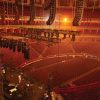


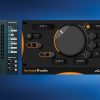
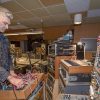
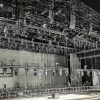





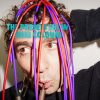






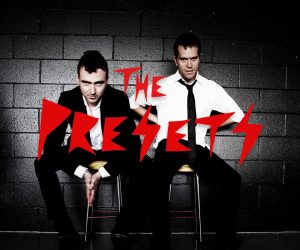










RESPONSES